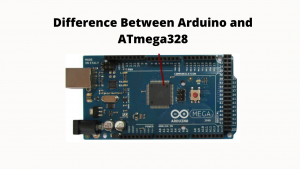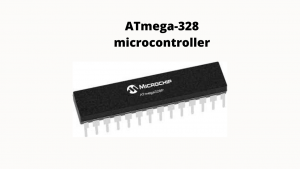ATmega328 software developer
Who is atmega328 software developer?
atmega328 software developer is a engineer who works on ATmega chipsets. he is involved is low level driver development to application development. ATmega328 MCUs perform strong commands, allowing the system to attain maximum throughput constitution. the constitution MIPS per MHz thus managing energy usage and speed of processing. These Microchip MCUs are intended for use in factory applications and automation of homes and buildings.
Are you looking for a atmega328 software developer for your projects. Then get in touch we can help with your project requirements.
How ATmega-328 works.
The ATmega-328 is essentially a microcontroller for Specialized Virtual RISC (AVR). Up to eight (8) bits sustain the information. The ATmega-328 has 32 KB of built-in system storage. There are a number of other attributes to this micro-controller. AT mega 328 has 1 KB memory Programmable Read Only Memory (EEPROM). You can also aim at the presentation to PIC16F877a (it’s a PIC Microcontroller) and then evaluate the features of these two microcontrollers. This is especially meaningful when the electrical supply provided to the microcontroller is withdrawn, but even then, after supplying it with the electrical supply, it may store the data as well as provide performance. In addition, there is 2 KB Static Random-Access Memory (SRAM) for ATmega-328. Later, other features will be clarified in the unit collective group constitution. the constitution MIPS per MHz, balancing energy usage and working memory by performing efficient directions in a clock cycle.

Figure. 1
Where to Use ATMEGA328P
Programming is what there is to do, uses ATMEGA328, similar to any other controller. At any moment, the controller simply executes the programme given by us. Without a programming controller, without doing anything, it just stays there.
- In ARDUINO IDE, the ATMEGA328P programming can also be performed.
- Compile it after writing the software to remove errors.
- Make the HEX file created by the IDE for the written programme after compilation.
- This HEX file contains machine code that should be written to the flash memory controller.
- Pick a specific product that creates interaction between both the PC and ATMEGA328P (generally an SPI programmer designed for AVR control systems). ATMEGA328P can also be programmed using the ARDUINO UNO board.
- Run the software for the programmer and select the required hex file.
- Use this programme to burn a handwritten programme HEX file to the ATMEGA328P memory chips.
- Disconnect the programmer, attach the controller’s necessary peripheral devices and then get the device running.
Why is ATmega328 used in an Arduino?
The Arduino board was aimed at students without even an experience in electronics and technology principles at the Ivrea user experience design Institute. In adapting to new challenges and needs, this board began to move from basic 8-bit frames to items for IoT (Internet of Things) devices, 3D printing, portable, and integrated environments. All boards are fully open-source, enabling users to independently create them and eventually customize them to their exact requirements. The Arduino boards were used over years to create projects, ranging from everyday objects to composite mass spectrometers. Around in this open-source point, an international group of designers, artists, teachers, engineers, enthusiasts and specialists gathered together, their contributions tallied up to an enormous amount of usable information that can be of tremendous benefit to newcomers and trust professionally.
The perfect board to just get acquainted with technology and programming seems to be the Arduino UNO. The UNO is by far the most stable board anyone could actually play on if it is your initial impression of experimenting with the framework.

Figure. 2
Atmega328P/Atmega328 difference
- Architectural style, Atmega328P and Atmega328 are the same in any way. So in lieu of a 328, users can only drop into a 328p and conversely.
- Atmega328P only absorbs less energy than Atmega328. In the schematic, check the numbers. It ensures that perhaps the 328P is made in a better method than the 328. Ex: 328 can be a 90 nm system and a 60 nm system may be 328P. So, yeah, just paying a bit more for the better method that will save you a few micro-amps with power. Then go with the 328P if that’s essential to everyone.
- The 328P and 328 chip signatures are distinct. So, if some program reads these certificates to make a choice (like Arduino), then you’re going to take a look out because the software might claim that it was using the incorrect processor.
- Point (2) above also indicates that perhaps the TQFP product chip version is only accessible in 328P and not in 328. That is because to get a larger processor die to fit in a compact space such as the TQFP, you just want a finer operation.
Basic CPU operation of the atmega328 software developer
- The next sequence of questions is loaded into the register file at the next clock pulse.
- The registers are 8-bit in multipurpose registries, but there are also 3 16-bit registers.
- And if the electricity is cut out, the EEPROM stores information indefinitely. Software is sluggish within the EEPROM.
- The Serial Peripheral Interface (SPI) is an interface bus widely used to transfer data to tiny peripheral devices including such cameras, monitors, SD cards, etc. among microcontrollers. In order to pick the computer you want to speak to, it enables different clock and data lines, including a select line. To recognise and recover from MCU failure, the 7. Watchdog detector is used.
- The analogue comparator compares the positively and negatively pin input data, and the performance is set when the positive pin price is better.
- Position and command are used by inspecting other blocks within the CPU at frequent intervals to regulate the flow of operation of commands.
- Firmware is a software application that is configured on a hardware computer or set of instructions. It provides the requisite guidance as to how the system interacts with other hardware of the machine. The firmware is stored on non-volatile ROM-like memory cards.
- 40 pins are available at Atmega32. Two for energy (pin no.10: +5v, pin no. 11: surface), two for resonator (pin 12, 13), one for reconnect (pin 9), several for inner ADC to provide the required power and comparison impedance, and 32 (4, 8) I / O pins.
Read more about this.